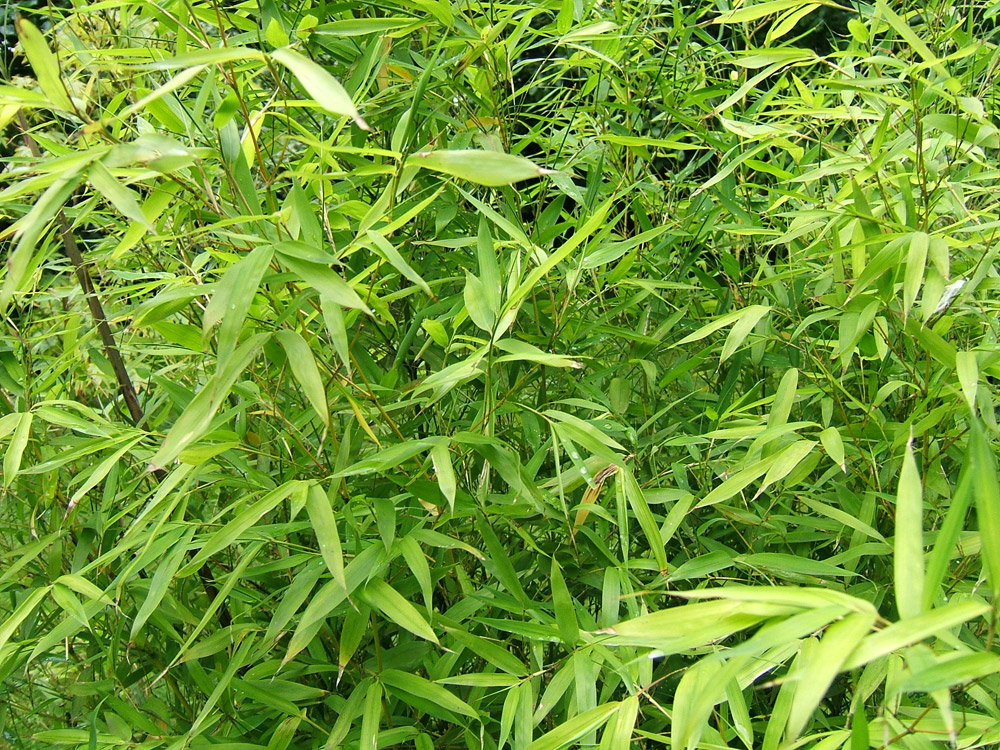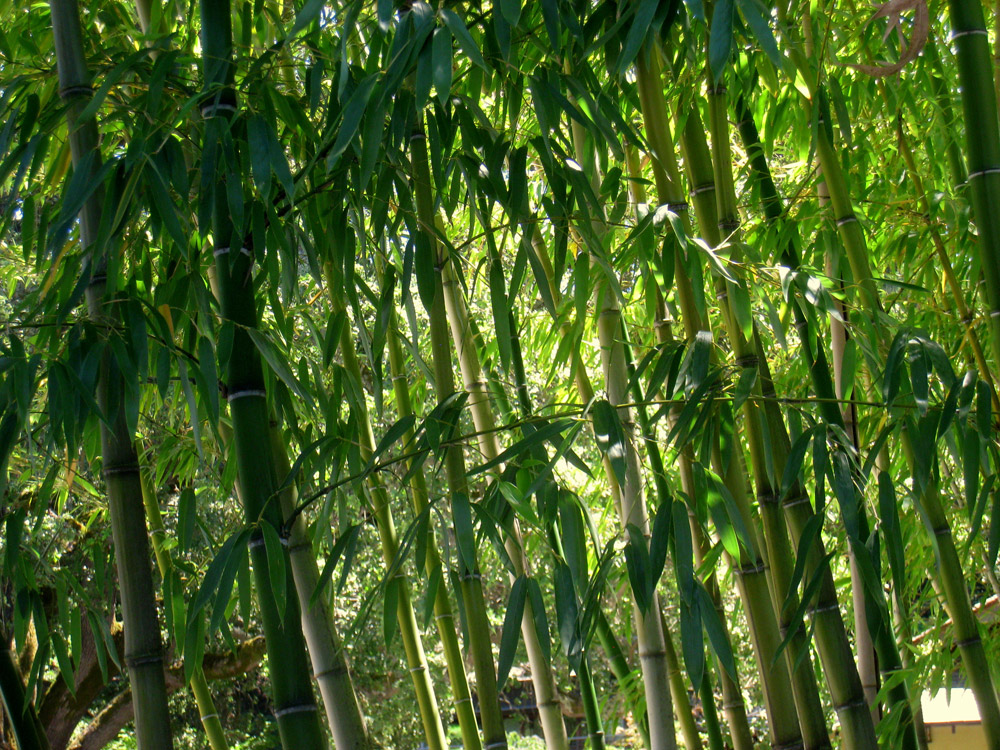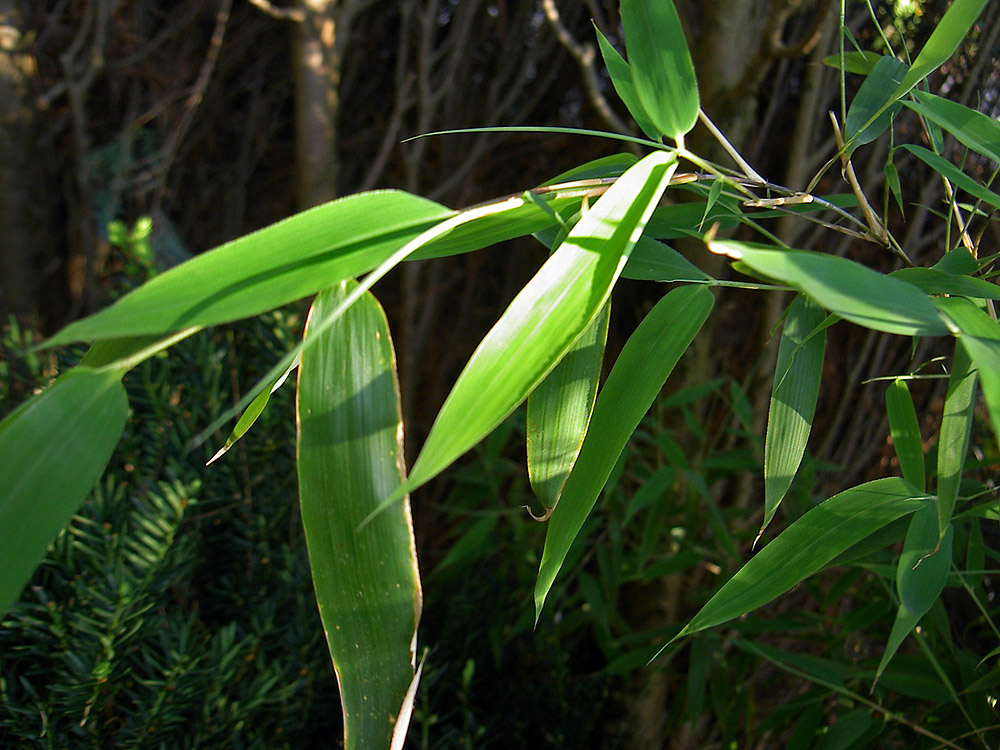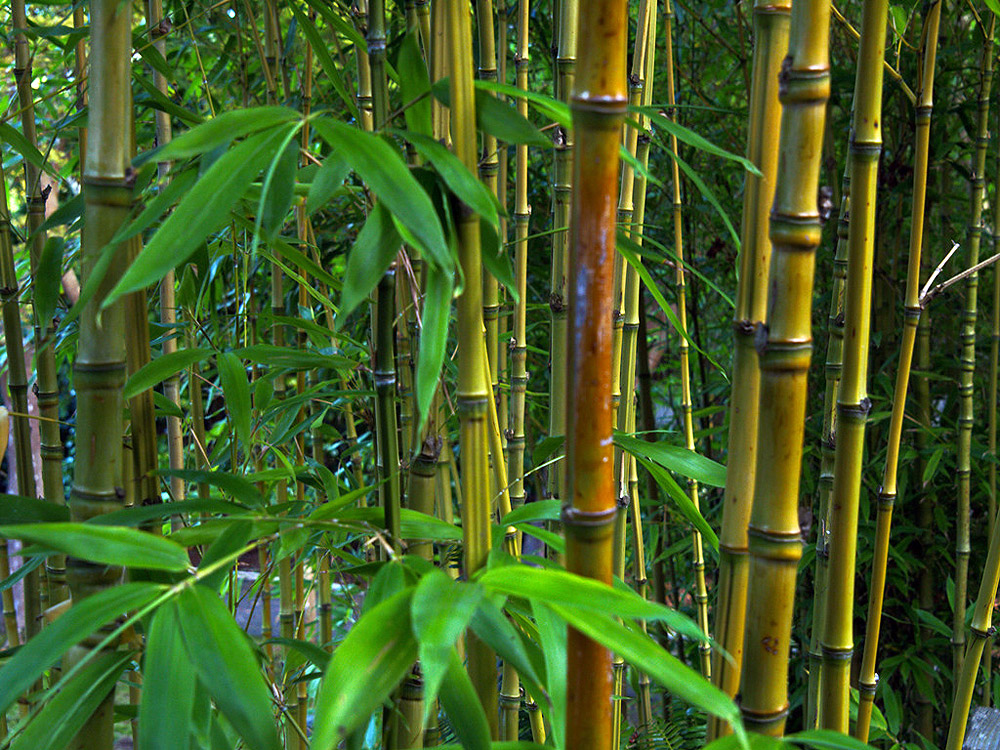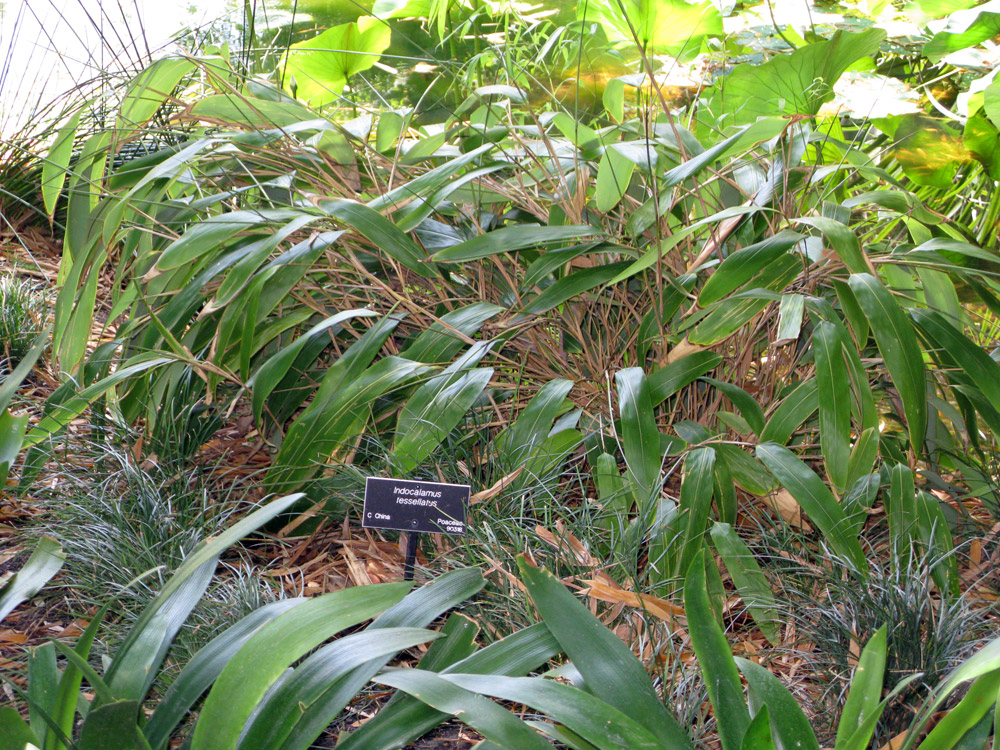Garden Plants, How and where to grow them
Shrubs &
Hedging
Bamboo
Bamboos are a group of woody perennial evergreen grasses, they are found mainly across Asia, Sub-Saharan Africa and South America, so are a botanically varied group though to the gardener are treated in a very similar manner differing in their height, stem colour and invasiveness.
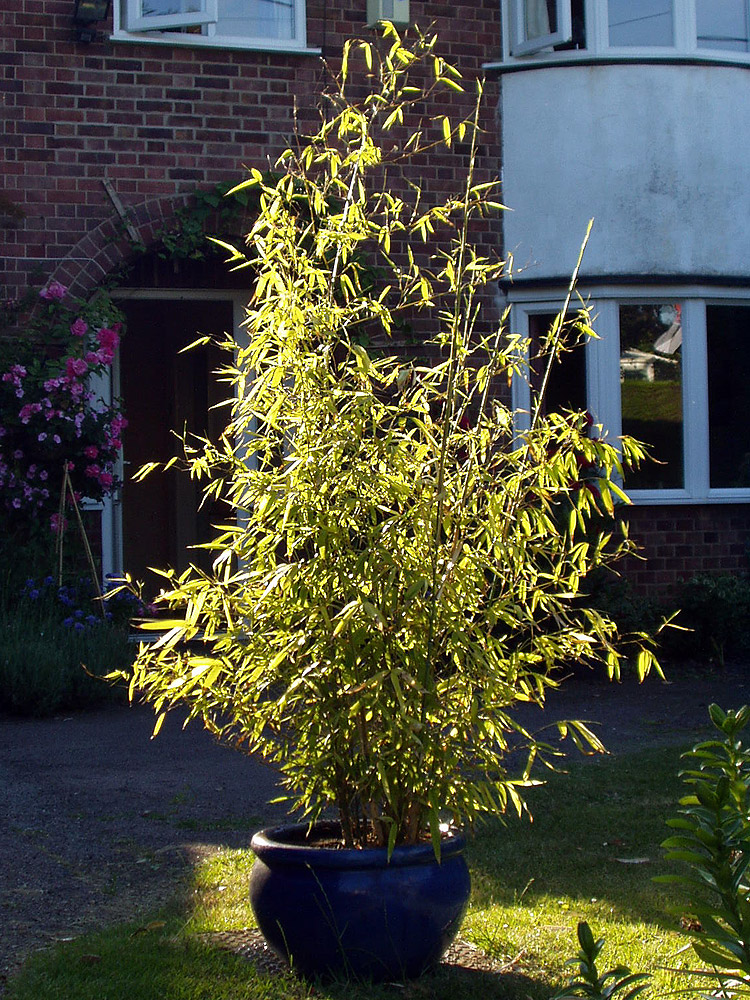 If used appropriately, bamboos are a valuable architectural
plant in the garden, their style is relatively rare
in that there are not many plants with so many leaves that size
and shape at that height, so they make a good contrast to many
other garden plants.
If used appropriately, bamboos are a valuable architectural
plant in the garden, their style is relatively rare
in that there are not many plants with so many leaves that size
and shape at that height, so they make a good contrast to many
other garden plants.Very broadly, bamboos fit into two groups, small spreading bamboos up to about 1m (3ft) tall, and the second group, taller, clump forming bamboos around 2m+ (7ft+). This latter group are generally less leafy than the smaller ones, more of the canes are visible and the leaves are smaller. There are a number of the taller varieties that have canes of different colours from shades of yellow to blue/green, red and black.
Bamboos can be rather fussy about where they want to grow, even within a garden. They do best with some sun, though not more than a few hours a day, they like a moist soil or at least little root competition. If your soil is not reliably moist or is not very moisture retentive, then they may do better as a specimen plant in an open semi-shaded position. If they are kept too dry or have too much direct sun, there is a tendency for some of the leaves to start to dry and fall making them look a little sorry for themselves. If less than ideally placed, they will still survive but not look at their best.
In the right place however, they will be problem free and very elegant with it. My approach is to grow a new one on in a large container then split it into three before trying each in a different place, possibly moving the less happy ones later.
The invasiveness of bamboos is often exaggerated and in Britain, it is unlikely that this will be a problem, large stands of bamboo that appear to have "taken over" are usually the result of many years of neglect. If you want to grow one of the more vigorously spreading kinds, use a large container or dig a very large planting hole and line with a non-perishable barrier to restrict the spread if you are concerned. The large mature sizes of the more tree like bamboos are unlikely to be reached in Britain unless you have the right kind of microclimate for them, expect them to reach 1/2 to 2/3rds of the quoted mature height in this country.
- Height and spread: 1-4m x 1m to indefinite, vary hugely on the species and situation
- Position: sun to shade, most generally do better in semi-shade and don't do well in too much of either. The more sun they have, the moister the soil needs to be.
- Soil: humous rich, moist but well drained is preferred. Humous rich and moist are the most important.
- Rate of growth: average to fast
- Other features: Can be used for informal hedging
- Hardiness: fully hardy
- Garden care: Very little needed, a generous mulch will help, particularly in more difficult conditions. No real pests or diseases. Old canes die off naturally, cut these at ground level when they have dried out and use your own home-grown bamboo supports.
- Uses - Architectural plant, specimen plant, informal hedge, lower growing species as ground cover
Questions about Bamboo
Q. Can you please tell me the best time of year to split a pot bound Black Bamboo and how far to cut back the existing canes (if at all ). The plant is about 5 years old.
A. Now (early April) is the best time (assuming you're in the UK or at least Northern hemisphere). Don't cut the canes back at all, the result will be ugly, if you want to remove any, remove them entirely for the base. If it's a big plant and mature, it won't be an easy job - I repotted my own fishpole bamboo last weekend, much wrestling and swearing ensued (it was about 6 feet tall in a very heavy ceramic pot that was wider in the middle than the top). Use secateurs or even loppers to cut through the roots if necessary. Have a reasonably sized clump in each part that you split. Any odd bits of stem that come adrift can also be repotted up as long as they have some root on them to make a new plant.
Q. I have clump forming bamboo, Phyllostachys Bissetia, and want to make a long screen. I now have 3 clumps established in the ground for 3 years - can I just cut out a stem with a spade and replant? Will I damage the existing plant, and will the new one survive just planted in the border? When would be the best time to do this?
A. Can I just cut out a stem with a spade? - yes and no, dig down a bit and get a good clump of stem and root and use that. Look after the new plants for a while - water and give a liquid fertiliser when they start growing in the spring. Best time is now, before they start into full growth. It's usually a pretty successful technique, the larger the clump the better, but don't expect a 100% success rate. For instance I split a bamboo that was in a 15 litre pot last year this time, I got 3 good clumps, 1 small and a couple of hopeful root/stem bits that fell off. All 3 of the big clumps carried on as though nothing had happened, the others died.
Photo credits: (numbering left to right top to bottom) 1-Paul Ward - angliangardener.co.uk / 2-Paul Ward - angliangardener.co.uk / 3-bamboo Public domain / 4-IKAl - Creative Commons Attribution 2.0 license. .5 / 5-Lord Koxinga - Creative Commons Attribution 3.0 Unported license. / 6-Sarunas Burdulis - Creative Commons Attribution 2.0 license. / 7-Symac - Creative Commons Attribution 3.0 Unported license.
Copyright 2000 - present. All Rights Reserved | Privacy Policy Statement

